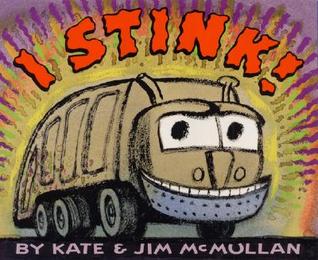Hello!
I hope everyone is having a great start to the school year!
We've had a fantastic month so far. We dedicated three weeks to learning the centers and each other, which we've had a chance to review since some new children started. It's given us an opportunity to let the students become leaders; for example, we can say to a child having trouble making friends, "Will you show them the art center?" So far, they've done well with the concept and it's a process.
Last week, we dove into the curriculum with a unit on Reducing, Reusing, and Recycling. The students loved the book "I Stink," about a dump truck. We started discussing the book and making the appropriate grossed-out noises.
And I realized that I've been doing KWL charts wrong for 7 years.
All through school and trainings, I've heard about the importance of doing KWL charts. They explained that K means "What we know," W means "What we want to know," and L means "What we've learned." And I hated them. Getting children to come up with questions was like herding cats.
You see, I'm 34 and my brain is fully developed. I have the executive functions, including metacognition, or the ability to think about my own thinking. So if you ask me what I want to learn about computers, I might say coding because I'm able to think about what I know already and realize what I don't know. I've been introduced to the idea of coding and what it is and I'm curious about it.
But children don't have this knowledge. So I would introduce a topic and ask them what they want to know and I'd get stares. Usually I'd have to generate a few questions for them and model the process, which would never really take by the end of the year.
So what was different this time? It was natural.
I love writing charts and lists with the children based on what they say; I believe this tells them that what they contribute is important. For example, we explored what we threw away and as they talked, I wrote a list of their comments.
We wrote a group story that started off slow, but they quickly warmed up to the idea and were able to illustrate their sentences. Again, their comments were written down.
So we read the book "I Stink" and they started talking about the book and what they knew. Then they asked a few questions and I realized, "I need to write this down!" Then I thought: this is the KWL chart.
So we came up with the below chart and as they talked about what they didn't know, I wrote it down as a question. You can see the chart below. It was very natural and now we have a springboard for what we want to talk about next.
If you're struggling with the KWL chart, next time try recording conversations in large group. You might find something surprising.
Do you use charts in your classroom? How do you write KWL charts?
Until next time, happy teaching!
--Amy Latta
Monday, September 25, 2017
Home »
executive functions
,
KWL chart
,
metacognition
,
preschool
» How I Learned to Stop Worrying and Love the KWL Chart









0 comments:
Post a Comment